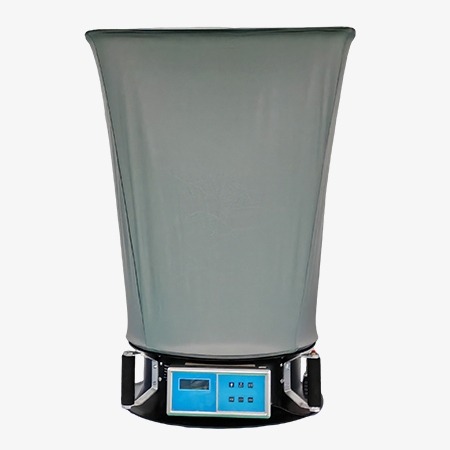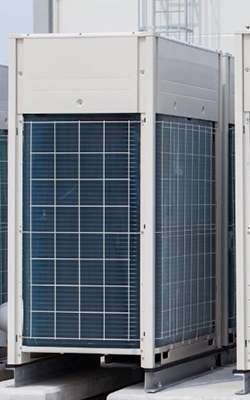The electronic balometer with LCD display is a high-precision air volume measurement tool, ideal for HVAC and purification applications. It uses the Pitot tube principle to measure wind pressure at multiple points, calculates air volume (m³/h), and features an LCD display, data storage for 1000 outlets, and a print interface. Powered by a 7.2V battery, it operates up to 30 hours and retains data for 4 hours after power failure. Its calibration ensures accuracy, making it a reliable choice for professionals.

Functional Features of Balometer
- Fast and accurate air flow measurement.
- Convenient data storage and management of the device.
- This balometer has a built-in battery and a long battery life, which ensures reliable data retention.
- Manufactured using a strict orifice plate standard wind tunnel device for multi-point air volume correction, providing reliable guarantees for directly measuring air volume.

Technical Parameters of Air Flow Hood
- This air flow balometer has a LCD display screen and a print interface, which provides real-time measurement readings and allows connection to an external printer.
- The self-resistance of the balometer is less than 5Pa, ensuring that it does not affect the measurement results.
Application
The balometer is a versatile airflow measurement device used across industries where precise air balancing and ventilation control are crucial. In the pharmaceutical industry, it ensures cleanroom airflow compliance to maintain contamination-free environments. Hospitals use it to monitor airflow in operating rooms and isolation wards, supporting infection control. In HVAC, technicians rely on it for air volume testing and system diagnostics to improve indoor air quality and energy efficiency. The electronics manufacturing industry also uses balometers for airflow control in cleanrooms and static-free zones. Whether for commissioning, troubleshooting, or maintenance, the balometer is essential for professionals requiring reliable, accurate airflow measurements.

Hospital

HVAC

Electronics Industry

Pharmaceutical Industry
| Model | SISCO-BM-FLY-1 |
| Measurement Target | Airflow |
| Measurement Range | 100~3000m3/h |
| Relative Error | Full range ±5%F.S |
| Self-resistance | Less than 5Pa |
| Display | LCD display |
| Working Temperature | 5~35℃ |
| Relative Humidity | 15%~70%RH |
| Wind Shield | 570 x 570 (mm) 830 x 830 (mm) |
| Weight | About 10kg |
Q1: What is a balometer?
A1: A balometer is a specialized instrument used to measure airflow, air velocity, and sometimes static pressure within ventilation and HVAC systems. It helps professionals assess and balance air distribution in various environments, ensuring that air is circulating efficiently and meets regulatory standards. The device is commonly used by HVAC technicians, engineers, and building maintenance teams to measure the volume of air moving through ducts, vents, and air handling units. By accurately gauging airflow, the balometer ensures optimal performance of HVAC systems, which is crucial for maintaining indoor air quality, energy efficiency, and system longevity. Additionally, balometers are used in cleanrooms, pharmaceutical settings, and other industries that require precise environmental control for sensitive processes.
Q2: How does a balometer work?
A2: A balometer works by measuring airflow and air velocity in ventilation and HVAC systems. It typically features a sensor that captures air movement as it passes through the device, with data displayed on an LCD screen or similar display. The balometer can measure air velocity at specific points in the system, such as ducts or vents, and calculate airflow in cubic feet per minute (CFM) or cubic meters per hour (CMM). Some models also measure static pressure to help diagnose issues like blockages or inefficiencies in the system. By providing accurate real-time data, the balometer helps HVAC professionals balance airflow, optimize system performance, and maintain indoor air quality.
Q3: How to use a balometer?
A3: To use a balometer, start by positioning the device at the air vent, duct opening, or grille where you want to measure the airflow. Attach the appropriate probe or airflow hood, if necessary. Turn on the balometer and ensure it’s calibrated correctly. The device will measure the air velocity and airflow, displaying the data on the screen in real-time. Take measurements at different points in the system to ensure even air distribution, then use the data to balance the system, troubleshoot issues, or optimize airflow for improved performance and efficiency.
Tips: Precautions to take when using a balometer
When using a balometer, it’s important to take several precautions to ensure accurate readings and safe operation. First, always follow the manufacturer's instructions for setup, calibration, and use to avoid damage to the device. Before taking measurements, ensure the area around the air vents or ducts is clear of obstructions that could interfere with airflow or affect the results. When positioning the device, hold it steady to prevent movement that could skew readings. If using a probe or airflow hood, ensure it is properly fitted to the measurement point to avoid leaks or inaccuracies. Additionally, avoid using the balometer in extreme conditions, such as excessive heat or humidity, unless the device is rated for those environments. Finally, after use, clean the device and store it properly to maintain its accuracy and extend its lifespan.
Thank you for buying industrial test and measurement equipment on SISCO.com, all products sold by SISCO and the partner cover a 12 months warranty, effective from the date of receiving the products.
What is covered?
SISCO is responsible for providing free spare parts, and free technical support to assist the customer to repair the defective products until the problem is solved.
What is not covered?
- Product purchased from anyone other than a SISCO store or a SISCO authorized reseller.
- Expendable parts.
- Routine cleaning or normal cosmetic and mechanical wear.
- Damage from misuse, abuse or neglect.
- Damage from use of parts other than SISCO approved.
- Damage from use outside the product’s usage or storage parameters.
- Damage from use of parts not sold by SISCO.
- Damage from modification or incorporation into other products.
- Damage from repair or replacement of warranted parts by a service provider other than a SISCO authorized service provider.
- Damage caused by the application environment not meeting the product usage requirements and the failure to perform preventive maintenance.

